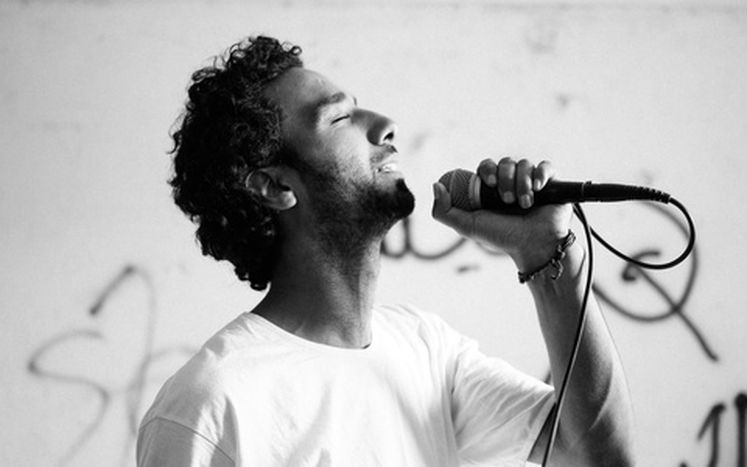
Casablanca's abbatoirs: the artists' factory on a knife-edge
Published on
Translation by:
Garen Gent-RandallIn recent years, the old abbatoirs in Casablanca have been given a new life by artists, in the hopes of forming a creative cultural space that brings the arts and audience together. But the future of this place is now threatened, due to the lack of investment from the city. A reportage into the heart of this factory of artists struggling to promote Moroccan talent.
The colours of the graffiti painted on the walls of Casablanca's former slaughterhouses shape the very soul of this cultural space located in the heart of the working-class neighbourhood of Hay Mohammedi. Behind one of the old stables, wrought iron screams under the electric saw. Young people are forcing sparks from a huge metal structure. It's the merry band that is circus arts troupe Colokolo, modifying the future café counter that will be the finishing touch to their show's backdrop. In their "lab", a hangar refurbished with whatever there is on hand, the circus artists take a break on cinema chairs from their on-stage acrobatics. Behind his moustache (inspired by the revolutionary Zapata), "Snoopy" explains why he likes this place that, for him, represents an excellent way to develop and popularise circus arts in Morocco: "This is the only place we can express ourselves. We can do more: aerial acts, work on scenery, things we couldn't do in the street or in cafés."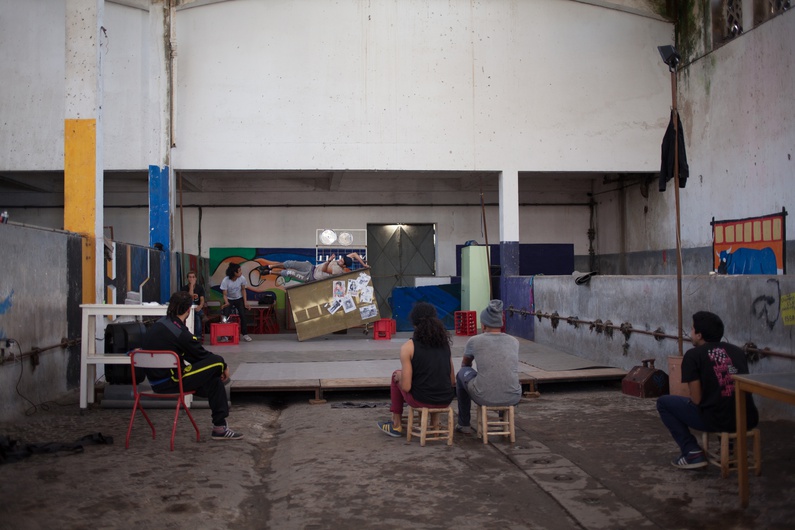
"WE'VE BEEN FIGHTING FOR YEARS, AND STILL NOTHING"
Considered abandoned, the abattoirs, covering several hectares, were closed in 2002, leaving the immense 1920s buildings at the mercy of development projects. But they hadn't counted on the determination of Casablanca's artists and other cultural players, who decided to move into the buildings to turn them into a space for urban and artistic creations in 2009. Since then, the groups which today make up the collective known as the Fabrique Culturelle des Anciens Abattoirs de Casablanca (the Cultural Factory at Casablanca's Old Slaughterhouses) have brought the place to life, holding festivals and activities regularly. But the collective is struggling to get it off the ground as a fertile creative space for Moroccan art.
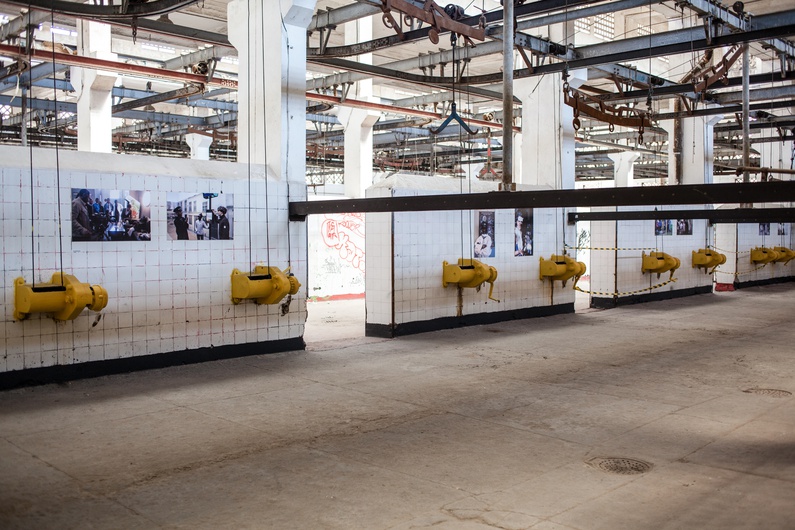 The buildings are owned by the city of Casablanca, and although it was behind their conversion to a culture space, it is dragging its feet when it comes to investing in the project further. Although it doesn't recognise the Fabrique Culturelle collective, the city allows events to be organised thanks to a convention signed with one of its members: the heritage safeguarding association, Casamémoire. It acts as a middle man between the collective and the city. The most recent convention, which lasts for a year, secured funding of a million dirhams (around €90,000). "We don't have enough to pay the debts that have built up and nothing left for the future. A year is only just enough time to decide on an artistic project," complains Abderrahim Kassou, one of the collective's coordinators. Community players aren't hiding their annoyance. "It's sapping our energy. We've been fighting for years, and still nothing. We've had enough," says Mohamed Merhari, known as "Momo", one of the organisers of the Tremplins festival, which promotes young Moroccan artists.
The buildings are owned by the city of Casablanca, and although it was behind their conversion to a culture space, it is dragging its feet when it comes to investing in the project further. Although it doesn't recognise the Fabrique Culturelle collective, the city allows events to be organised thanks to a convention signed with one of its members: the heritage safeguarding association, Casamémoire. It acts as a middle man between the collective and the city. The most recent convention, which lasts for a year, secured funding of a million dirhams (around €90,000). "We don't have enough to pay the debts that have built up and nothing left for the future. A year is only just enough time to decide on an artistic project," complains Abderrahim Kassou, one of the collective's coordinators. Community players aren't hiding their annoyance. "It's sapping our energy. We've been fighting for years, and still nothing. We've had enough," says Mohamed Merhari, known as "Momo", one of the organisers of the Tremplins festival, which promotes young Moroccan artists.
ECLECTICS IN THE RUINS
On an artistic level, the collective wants to progress to the next stage. "Now we need to give the group some structure to organise quality arts programming. We get a lot of quality artists asking for residencies, but all we can offer is a campsite because we can't host them," Abderrahim Kassou says sadly. To survive in the cultural wilderness, the huge building has to remain standing. One section has already fallen into ruin and more and more spaces are shut off for safety reasons.
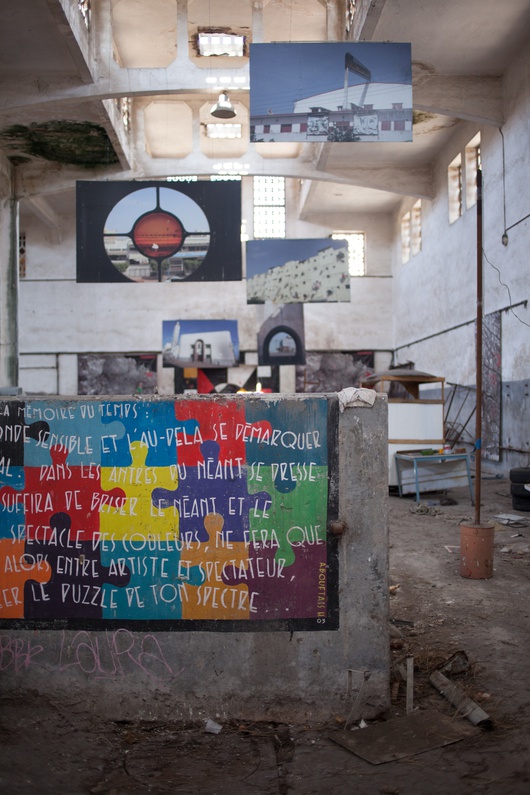 Lost in the vastness of these buildings, discovering l'Batwar, as the abattoirs are known, means meeting young skaters, listening to musicians practising in side rooms, and watching a contemporary dance ballet all in the same day. The mix of art forms and audiences has become a trademark of the Culture Factory. But the hopes placed in the abattoirs seem to be firmly rooted in the past. The future is less certain. The « Transculturelles » of 2009, which inaugurated the conversion of the former abattoirs, are engraved in people's memories. "It was wonderful. It showed the strength of the abattoirs. They create a synergy between all the arts. There were intellectuals, rich people, poor people... One of the ideas behind the abattoirs was to democratise culture. It was a new breath of life, but it only came once," says Fatna Elbouih, a member of the collective.
Lost in the vastness of these buildings, discovering l'Batwar, as the abattoirs are known, means meeting young skaters, listening to musicians practising in side rooms, and watching a contemporary dance ballet all in the same day. The mix of art forms and audiences has become a trademark of the Culture Factory. But the hopes placed in the abattoirs seem to be firmly rooted in the past. The future is less certain. The « Transculturelles » of 2009, which inaugurated the conversion of the former abattoirs, are engraved in people's memories. "It was wonderful. It showed the strength of the abattoirs. They create a synergy between all the arts. There were intellectuals, rich people, poor people... One of the ideas behind the abattoirs was to democratise culture. It was a new breath of life, but it only came once," says Fatna Elbouih, a member of the collective.
Fatna came to watch short films being shot on site. It's filmmaker Michel Gondry's "amateur film factory" that brings the abattoirs to life. The famous French director set up his equipment and some scenery there. All the young visitors have to do now is film. Through titles such as Murder in Paris, Abdel Sader Killed Us, and Searching for the Thief in the library of films already shot, young people are expressing themselves. "There's a lot of violence in what's been filmed. That's what most of the kids round here experience," says Jean David, a producer living in Casablanca who coordinates the project on-site. "It's the only place in Morocco where you can film without permission. It's a place of incredible freedom," he adds enthusiastically.
NO FUTURE WITHOUT THE CITY
Things were looking bright. But then something came along and spoiled it. After the city refused permission, a festival planned for 20 February this year couldn't take place at the abattoirs and had to seek refuge elsewhere. The reason: its presumed link with the 20 February Movement, behind the Moroccan uprising during the Arab Spring.
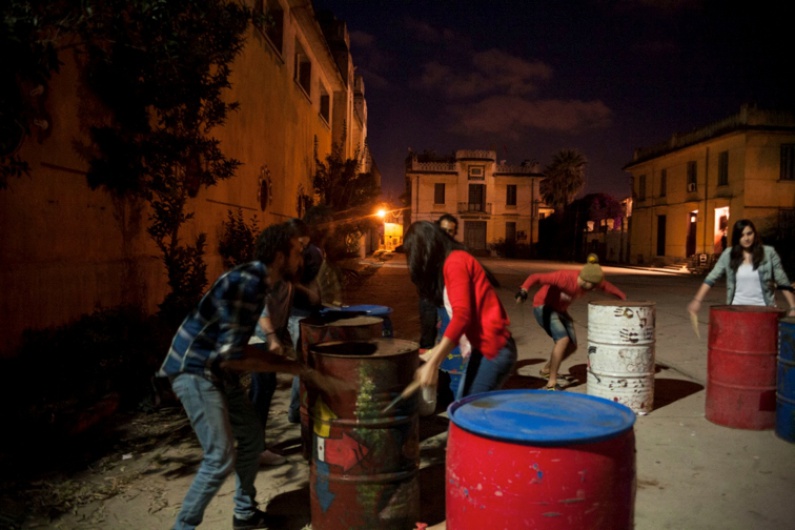 As night falls one Saturday evening, the air resonates with the sound of pounding drums between the abattoir walls. Cyclody, a barrel-playing percussion group, plays beats inspired by Gnawa and Chaabi, traditional Moroccan music. "We took barrels we found in the street to make music. Here, you can open up and go wild artistically. The idea is to unwind at the end of the week, but through creating something," explains Soufiane Benkhassala, one of the group's members. Although Morocco doesn't want for talent and creativity, the country is suffering acutely from a lack of cultural policies to support and promote Moroccan artists. A job for the factory?
As night falls one Saturday evening, the air resonates with the sound of pounding drums between the abattoir walls. Cyclody, a barrel-playing percussion group, plays beats inspired by Gnawa and Chaabi, traditional Moroccan music. "We took barrels we found in the street to make music. Here, you can open up and go wild artistically. The idea is to unwind at the end of the week, but through creating something," explains Soufiane Benkhassala, one of the group's members. Although Morocco doesn't want for talent and creativity, the country is suffering acutely from a lack of cultural policies to support and promote Moroccan artists. A job for the factory?
THIS ARTICLE IS PART OF A SPECIAL CAFEBABEL EDITION ON CASABLANCA CARRIED OUT AS PART OF THE EUROMED REPORTER PROJECT, INITIATED BY CAFEBABEL IN PARTNERSHIP WITH I-WATCH, SEARCH FOR COMMON GROUND AND THE ANNA LINDH FOUNDATION. YOU CAN FIND ALL THE ARTICLES ON THIS SUBJECT ON THE FRONT PAGE OF THE MAGAZINE.


Translated from L’Batwar à Casablanca : fabrique fragile d'artistes



